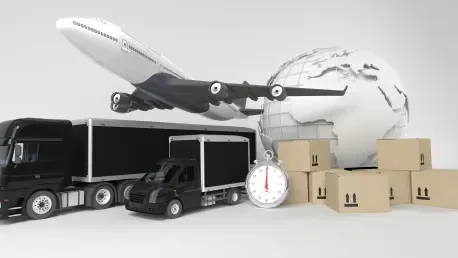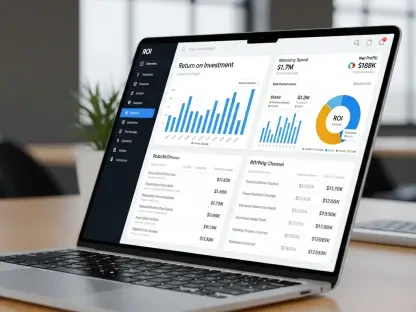Overview of a Vital Logistics Segment
In the fast-paced world of logistics, short haul road freight transport stands as a cornerstone of supply chain efficiency, handling the movement of goods over distances typically under 300 miles, and focusing on regional or intercity deliveries. This segment often connects urban hubs with nearby areas through trucks and vans. Its significance lies in facilitating last-mile delivery, ensuring that both perishable and non-perishable goods reach their destinations swiftly, a critical need in today’s consumer-driven economy.
Beyond speed, short haul freight serves as a linchpin in integrating with broader transportation networks like rail, air, and maritime systems. This connectivity supports industries such as retail, manufacturing, and e-commerce, where quicker delivery cycles compared to long-haul trucking are essential for meeting tight schedules. The ability to respond rapidly to demand fluctuations makes this sector indispensable for businesses aiming to maintain competitive edges.
Major players like FedEx, UPS, and DHL dominate the landscape, driving innovation through technology and strategic expansions. Their efforts enhance service reliability and market competitiveness. Additionally, government policies and infrastructure investments play a pivotal role in shaping the industry’s capacity, with improved roadways and supportive regulations boosting operational efficiency across regions.
Market Growth and Driving Forces
Key Trends Shaping the Industry
The explosion of e-commerce has fundamentally transformed short haul freight, creating an urgent need for rapid, frequent deliveries in urban and suburban zones. As online shopping continues to surge, companies rely heavily on this segment to bridge the gap between warehouses and customers, ensuring same-day or next-day delivery options remain viable.
Urbanization, coupled with population growth, further intensifies the demand for robust last-mile solutions. Meanwhile, just-in-time inventory practices and the increasing reliance of small and medium-sized enterprises on regional freight services add layers of complexity and opportunity. Cold chain logistics also emerges as a critical trend, catering to the safe transport of temperature-sensitive goods like pharmaceuticals and fresh produce.
Technological advancements are revolutionizing operations, with tools like fleet telematics, route optimization software, and real-time tracking enhancing efficiency. These innovations reduce delivery times and operational costs, allowing firms to meet rising consumer expectations. Together, these trends signal a dynamic shift toward more agile and responsive freight systems.
Growth Projections and Market Performance
Current projections indicate that the U.S. short haul freight market will grow from its present value to $202 billion by 2033, achieving a compound annual growth rate (CAGR) of 3.53% from now through that period. This steady upward trajectory reflects the sector’s resilience and adaptability amid evolving economic conditions and consumer behaviors.
Key regions such as California, Texas, New York, and Florida stand out as major hubs due to their high economic activity and dense populations. These areas drive significant freight volumes, fueled by robust commercial ecosystems and consumer demand. The concentration of business and infrastructure in these states underscores their pivotal role in market expansion.
Government initiatives also contribute to this growth, with substantial investments in road infrastructure and policies aimed at modernizing logistics frameworks. Such efforts enhance capacity and streamline operations, paving the way for sustained market development over the coming years. The combined impact of these factors positions the industry for consistent progress.
Challenges Facing the Sector
Rising fuel costs remain a formidable barrier to profitability in short haul freight, straining budgets and threatening operational sustainability. Fluctuations in energy prices directly impact margins, compelling companies to seek cost-effective strategies without compromising service quality in a highly competitive environment.
Urban challenges add another layer of difficulty, with traffic congestion and stringent delivery regulations in densely populated areas slowing down operations. Navigating narrow streets and restricted zones often delays schedules, frustrating efforts to maintain efficiency. These hurdles are particularly acute in major metropolitan centers where demand is highest.
Yet, solutions are emerging through innovations in fleet management, such as electric vehicles and advanced routing systems, which help mitigate fuel expenses and urban bottlenecks. Supportive government policies, including relaxed zoning rules and infrastructure upgrades, also offer relief. These combined approaches aim to bolster resilience and ensure the sector can adapt to ongoing pressures.
Regulatory Environment and Policy Impact
The regulatory landscape for short haul freight encompasses a range of traffic and urban delivery restrictions that shape daily operations. Compliance with local and federal guidelines on vehicle emissions, weight limits, and delivery windows is mandatory, often requiring firms to adjust routes and schedules to avoid penalties.
Government investments in road infrastructure provide a counterbalance, improving connectivity and reducing transit times across key corridors. Policies aimed at modernizing logistics, such as incentives for adopting green technologies, further influence how companies structure their operations. These measures are critical for maintaining a balance between regulation and growth.
Adherence to these rules not only ensures legal compliance but also impacts long-term industry expansion. Companies that align with regulatory expectations often gain a competitive advantage through improved public perception and operational stability. The interplay between policy and practice remains a defining factor in the sector’s ability to scale effectively.
Future Outlook for the Industry
Looking ahead, emerging technologies such as advanced telematics and automation promise to redefine short haul freight operations. These tools offer unprecedented precision in tracking and managing fleets, potentially reducing costs and enhancing service reliability as adoption rates increase over time.
Consumer preferences are also evolving, with a growing emphasis on faster and more dependable delivery services. This shift pressures companies to innovate continuously, exploring options like drone deliveries or micro-fulfillment centers to meet expectations. Staying attuned to these demands will be crucial for maintaining market relevance.
Global economic conditions and potential disruptors, such as supply chain interruptions or trade policy changes, could influence the sector’s trajectory. However, strategic efforts by major players to diversify services and invest in resilience are likely to shape future growth areas. The industry stands at a crossroads, balancing innovation with adaptability to navigate uncertainties.
Final Reflections and Strategic Pathways
Reflecting on the comprehensive analysis, the U.S. short haul freight market demonstrates remarkable growth potential, underpinned by e-commerce expansion, technological advancements, and infrastructure support. Challenges like fuel costs and urban constraints test the sector’s endurance, yet its capacity to innovate shines through as a hallmark of resilience.
For stakeholders, the path forward involves prioritizing investments in sustainable technologies and fleet optimization to counter operational hurdles. Exploring partnerships with local governments to ease regulatory burdens emerges as a viable strategy to enhance efficiency. These actionable steps promise to solidify the industry’s foundation amid evolving demands.
Ultimately, a focus on integrating cutting-edge solutions with consumer-centric approaches offers the best chance to capitalize on growth opportunities. By addressing both current limitations and future possibilities, the sector positions itself as a vital driver of economic progress, ensuring seamless goods movement across regional landscapes for years to come.









